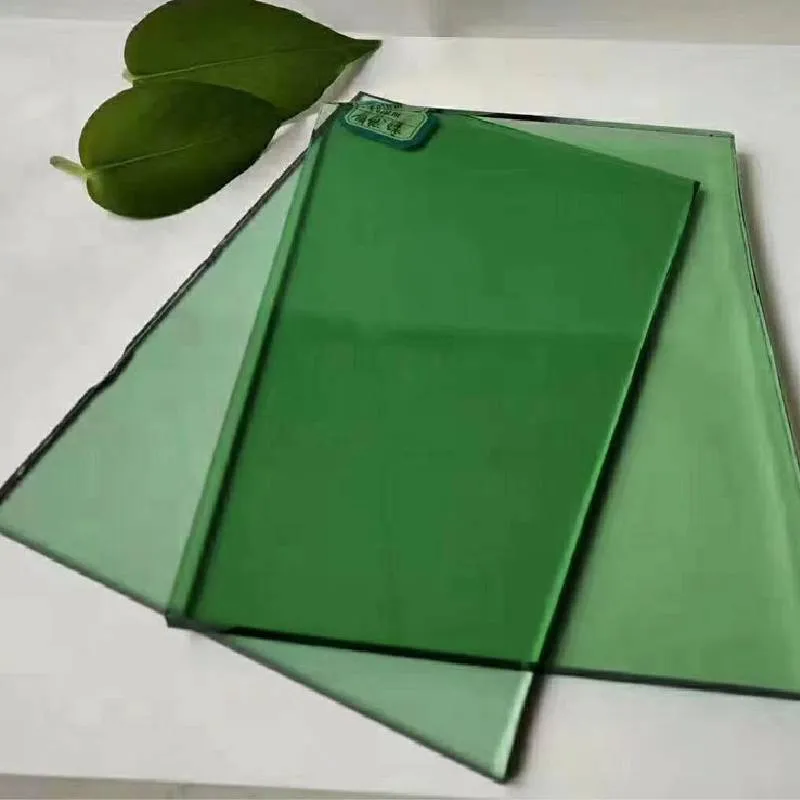Types of Float Glass Understanding the Essentials
Float glass, a widely used form of glass, is renowned for its impressive clarity, uniform thickness, and versatility, making it an essential material in both residential and commercial applications. This article explores the various types of float glass, highlighting their unique properties, manufacturing processes, and common uses.
What is Float Glass?
Float glass is produced using the float process, a method developed in the 1950s. This process involves floating molten glass on a bed of molten tin, which creates a smooth and flat surface. The result is a high-quality sheet of glass with excellent optical clarity and minimal distortion. Float glass typically comes in large sheets and is cut to size for various applications.
Types of Float Glass
1. Clear Float Glass This is the most basic type of float glass. It is colorless and transparent, providing an excellent level of light transmission. Clear float glass is used in a wide range of applications, including windows, skylights, and glass doors. Its aesthetic appeal and ease of handling make it a preferred choice in many architectural designs.
2. Low Iron Float Glass Low iron float glass is crafted with a reduced iron content, resulting in a glass that appears almost completely clear with minimal green tint. This type of glass is particularly popular in high-end applications such as solar panels, display cases, and glass facades, where maximum light transmission and clarity are desired.
types of float glass
3. Tinted Float Glass Tinted float glass is produced by adding color additives during the melting process. This results in glass that comes in various shades, such as bronze, gray, green, and blue. Tinted glass is effective in reducing glare and solar heat gain, making it a suitable choice for buildings in sunny climates. It is often used in commercial buildings and office spaces to improve comfort and energy efficiency.
4. Reflective Float Glass Reflective float glass is coated with a thin layer of metal oxide, which enhances its reflective properties. This type of glass not only provides privacy and glare reduction but also improves solar control by reflecting UV rays. Reflective glass is commonly used in skyscrapers and commercial buildings to enhance their aesthetic appeal while reducing energy costs.
5. Laminated Float Glass Laminated float glass consists of two or more layers of float glass bonded together with a layer of polyvinyl butyral (PVB). This results in a safety glass that holds together even when shattered, making it ideal for applications where safety is paramount, such as in cars, shower screens, and skylights. Laminated glass also offers sound insulation and UV protection.
6. Tempered Float Glass Tempered float glass is heat-treated to increase its strength. During the tempering process, the glass is heated to high temperatures and then rapidly cooled. This process alters the internal structure of the glass, making it much stronger than regular float glass. Tempered glass is used in environments where increased safety and strength are required, such as in glass doors, facades, and shower enclosures.
7. Patterned Float Glass This type of float glass is embossed with different patterns, providing both aesthetic appeal and additional privacy. It is commonly used in applications such as bathroom windows and office partitions where natural light is desired without compromising privacy.
Conclusion
Float glass is a highly versatile material that comes in various forms to suit diverse applications. From the clarity of clear float glass to the strength of tempered glass, each type offers unique benefits and functionalities. Understanding these types can help architects, designers, and consumers make informed decisions when selecting the right glass for their specific needs. As technology advances, the development of new float glass types and enhancements will likely continue, expanding its applications across numerous industries.
 Afrikaans
Afrikaans  Albanian
Albanian  Amharic
Amharic  Arabic
Arabic  Armenian
Armenian  Azerbaijani
Azerbaijani  Basque
Basque  Belarusian
Belarusian  Bengali
Bengali  Bosnian
Bosnian  Bulgarian
Bulgarian  Catalan
Catalan  Cebuano
Cebuano  Corsican
Corsican  Croatian
Croatian  Czech
Czech  Danish
Danish  Dutch
Dutch  English
English  Esperanto
Esperanto  Estonian
Estonian  Finnish
Finnish  French
French  Frisian
Frisian  Galician
Galician  Georgian
Georgian  German
German  Greek
Greek  Gujarati
Gujarati  Haitian Creole
Haitian Creole  hausa
hausa  hawaiian
hawaiian  Hebrew
Hebrew  Hindi
Hindi  Miao
Miao  Hungarian
Hungarian  Icelandic
Icelandic  igbo
igbo  Indonesian
Indonesian  irish
irish  Italian
Italian  Japanese
Japanese  Javanese
Javanese  Kannada
Kannada  kazakh
kazakh  Khmer
Khmer  Rwandese
Rwandese  Korean
Korean  Kurdish
Kurdish  Kyrgyz
Kyrgyz  Lao
Lao  Latin
Latin  Latvian
Latvian  Lithuanian
Lithuanian  Luxembourgish
Luxembourgish  Macedonian
Macedonian  Malgashi
Malgashi  Malay
Malay  Malayalam
Malayalam  Maltese
Maltese  Maori
Maori  Marathi
Marathi  Mongolian
Mongolian  Myanmar
Myanmar  Nepali
Nepali  Norwegian
Norwegian  Norwegian
Norwegian  Occitan
Occitan  Pashto
Pashto  Persian
Persian  Polish
Polish  Portuguese
Portuguese  Punjabi
Punjabi  Romanian
Romanian  Russian
Russian  Samoan
Samoan  Scottish Gaelic
Scottish Gaelic  Serbian
Serbian  Sesotho
Sesotho  Shona
Shona  Sindhi
Sindhi  Sinhala
Sinhala  Slovak
Slovak  Slovenian
Slovenian  Somali
Somali  Spanish
Spanish  Sundanese
Sundanese  Swahili
Swahili  Swedish
Swedish  Tagalog
Tagalog  Tajik
Tajik  Tamil
Tamil  Tatar
Tatar  Telugu
Telugu  Thai
Thai  Turkish
Turkish  Turkmen
Turkmen  Ukrainian
Ukrainian  Urdu
Urdu  Uighur
Uighur  Uzbek
Uzbek  Vietnamese
Vietnamese  Welsh
Welsh  Bantu
Bantu  Yiddish
Yiddish  Yoruba
Yoruba  Zulu
Zulu 

